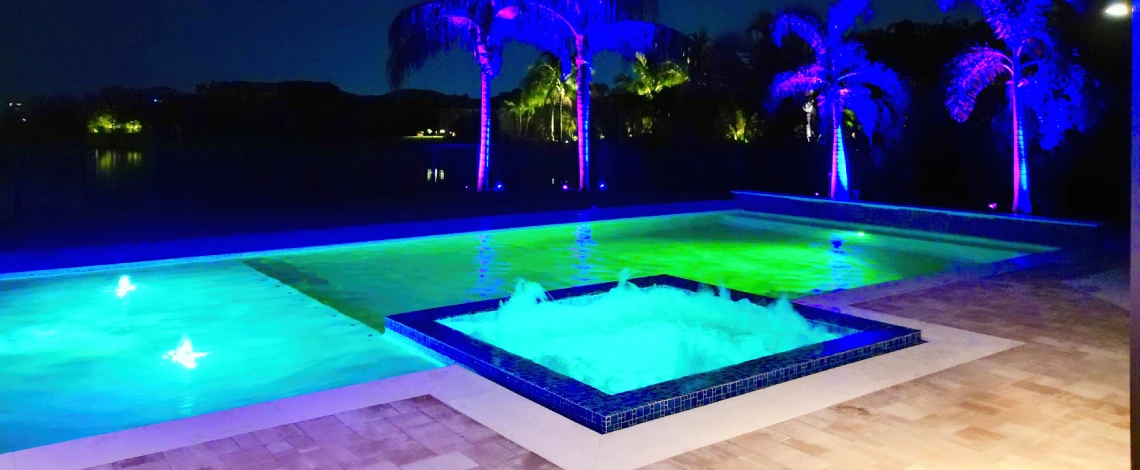Layered lighting in the landscape turns a flat outdoor space into something richer and more inviting. By combining ambient, task, and accent lighting, each serving its own function, you get depth, safety, and beauty that a single source can’t deliver on its own.
The Three Tiers of Landscape Lighting
Ambient (Base) Lighting
Ambient lighting provides the soft, overall illumination that allows you to move safely and comfortably after dark.
Goal: Create a gentle, functional brightness.
Fixtures: Wall sconces, post lights, string lights, recessed soffit lights.
Trick: Use downlighting from trees or pergolas to mimic moonlight across patios and lawns.
Task (Functional) Lighting
Task lighting is focused and purposeful — it aims lighting where you need it most for activities.
Goal: Illuminate functional zones without harsh glare.
Fixtures: Step lights, path lights, deck lights, under-rail lighting.
Trick: Stagger lights along pathways, near stairs, and around cooking or gathering areas so you get safe visibility without creating runway-style brightness.
Accent (Decorative) Lighting
Accent lighting adds drama and highlights special features in your landscape.
Goal: Inject visual interest and draw attention to focal points.
Fixtures: Spotlights, uplights, in-ground well lights.
Techniques:
- Uplighting: Shine light upward from the base of trees or architectural features to highlight texture and height.
- Silhouetting: Position a light behind an object to create striking outlines against a backdrop.
- Grazing: Place a fixture close to a textured wall (stone, brick) to emphasize its pattern and relief.
How the Layers Work Together
- Depth & Dimension: Mixing heights, intensities, and fixture types transforms a flat yard into a multi‑dimensional space.
- Balance: Ambient light softens the sharp contrast between bright accent lighting and shadows, reducing glare.
- Safety & Security: Task lighting keeps paths and functional zones visible, while accent lighting deters intruders by removing hiding spots.
- Ambiance Control: With dimmers or smart control systems, you can shift moods — brighter for entertaining, softer for quiet evenings.
Tips for Implementation & Fixture Choice
- Begin with ambient lighting, layer task lighting where needed, and finish with accent lighting to highlight features — this “layer ladder” method is supported in lighting design best practices.
- Stick to a consistent color temperature (warm white around 2700K–3000K) to maintain visual harmony.
- Keep accent fixtures from overlapping too far or too close — path light spacing rules (6–8 ft) offer a helpful guide.
- Use shielded fixtures and carefully angled beams to reduce glare and light spill into neighboring areas.
- Sketch your yard at night with your layers in mind — ambient first, task next, and accent for drama.
Let Total Scape Design Light Your Night
Layered lighting is both functional and magical — it brings your outdoor space to life after dark. At Total Scape Design, we design and install lighting systems tailored to your yard’s structure, plantings, and use patterns.
Contact us today to create a layered lighting plan that’s as beautiful as it is practical — and let your yard glow with style and purpose.


